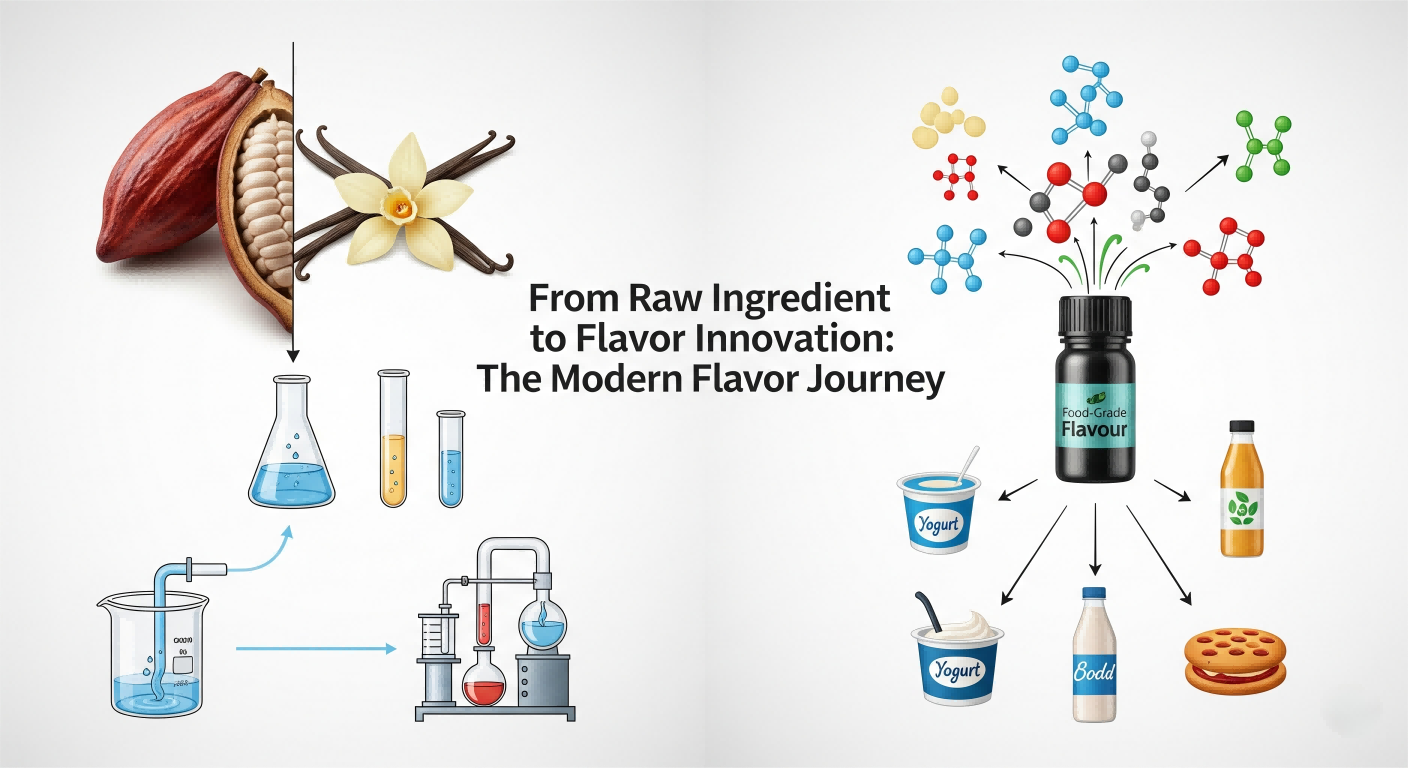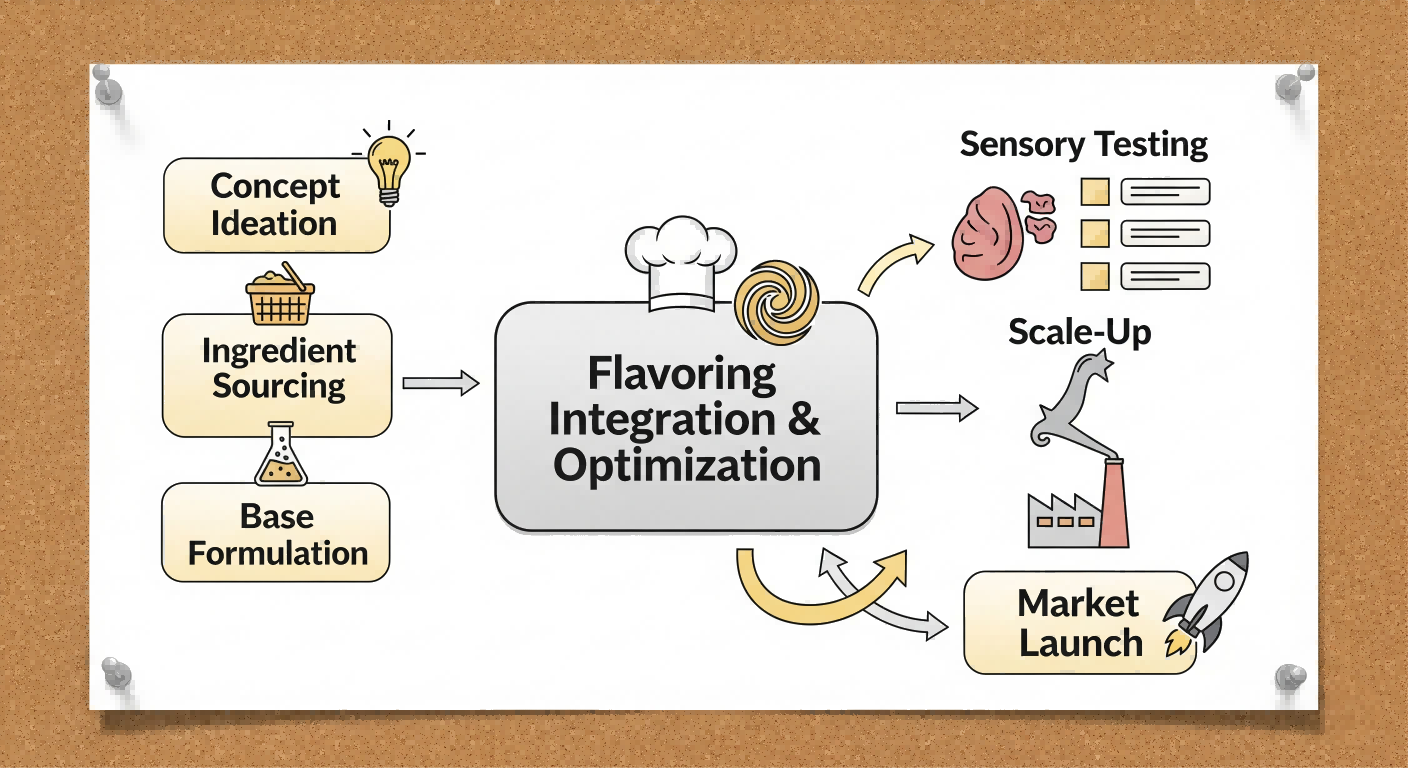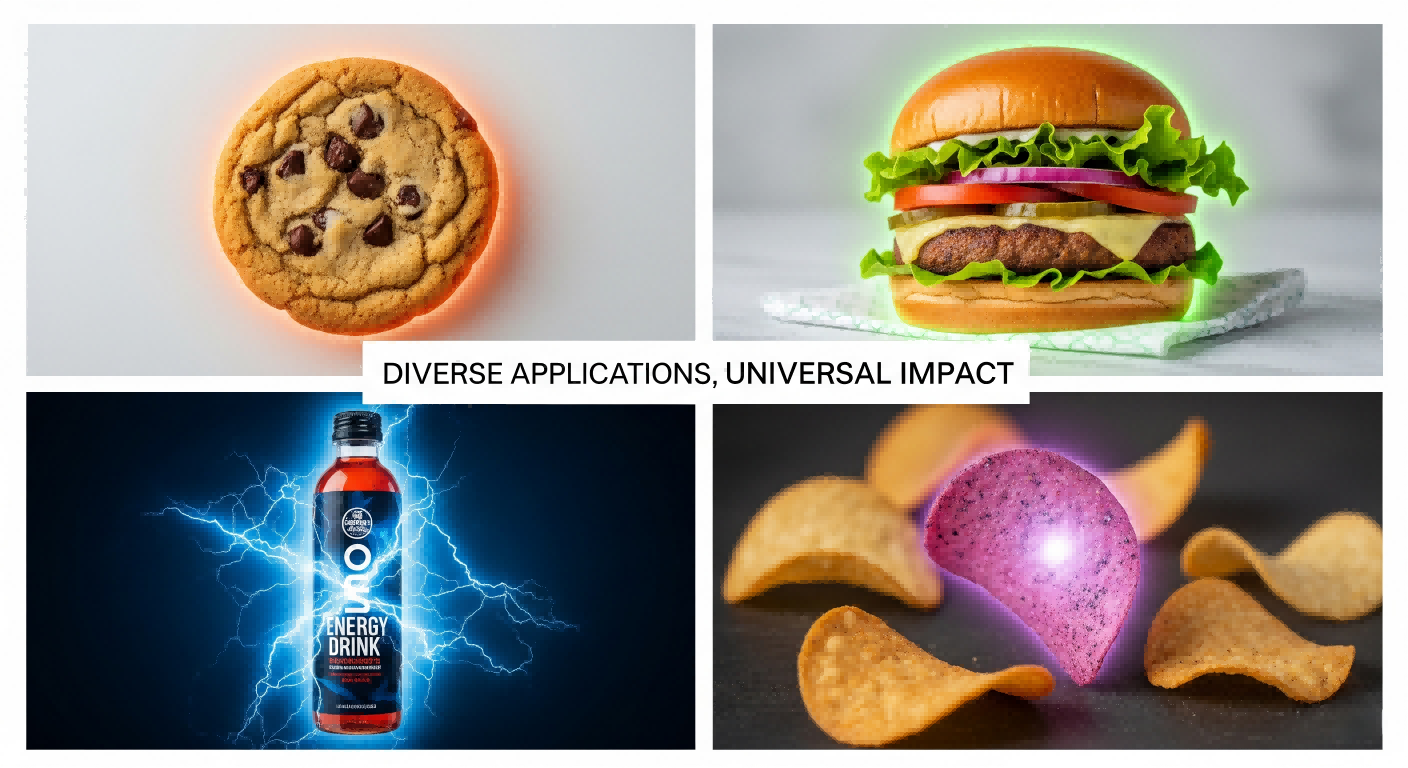The Strategic Imperative of Aroma and Taste in a Competitive M

The Modern Flavor Journey
In the fiercely competitive landscape of the food and beverage industry, the quest for differentiation and consumer appeal is relentless. At the heart of this pursuit lies flavor – the single most critical determinant of a product’s success. Beyond mere taste, flavor evokes memories, shapes preferences, and drives purchasing decisions. It is no longer enough for a product to be merely “good”; it must be “irresistible.” This monumental shift has propelled food-grade flavorings from simple additives to indispensable, strategic tools that are actively revolutionizing product development. This in-depth technical exploration delves into the intricate science and strategic application of food-grade flavorings, demonstrating how they empower manufacturers to innovate, meet evolving consumer demands, and achieve unparalleled market success.
Before we can appreciate the impact of flavorings, we must first understand the complex biological and psychological mechanisms behind flavor perception. Flavor is not merely taste; it is a multifaceted sensory experience that combines taste (gustation), smell (olfaction), and trigeminal sensations (chemesthesis).
Our tongues are equipped with taste buds containing specialized receptor cells that detect five fundamental tastes:
Each taste receptor operates via specific molecular mechanisms. For instance, sweet and umami tastes are mediated by G protein-coupled receptors (GPCRs), while sourness involves ion channels. A profound understanding of these pathways allows flavor chemists to design compounds that precisely target these receptors.
While taste provides the basic framework, smell accounts for up to 80% of what we perceive as flavor. Volatile organic compounds (VOCs) from food enter the nasal cavity via two routes:
The olfactory bulb processes these signals, sending them to various brain regions, including those involved in memory and emotion. This explains why certain aromas can instantly transport us back in time or evoke strong feelings. The sheer number of olfactory receptors (hundreds in humans) allows for the discrimination of thousands of different smells, creating an incredibly rich and nuanced flavor profile.
Beyond taste and smell, chemesthesis refers to the chemical sensitivity of the skin and mucous membranes, particularly those of the mouth and nose, mediated by the trigeminal nerve. These sensations include:
These sensations add another layer of complexity to the overall flavor experience, contributing significantly to a product’s mouthfeel and overall appeal.
Flavor development, therefore, is an exercise in orchestrating these three sensory modalities. Food-grade flavorings are the tools used to compose this sensory symphony, allowing product developers to precisely tune each note.
Modern food-grade flavorings are the culmination of centuries of culinary art and decades of advanced scientific research. Their origins can be broadly categorized into several types:
Defined by regulatory bodies (e.g., the FDA in the U.S.) as “the essential oil, oleoresin, essence or extractive, protein hydrolysate, distillate, or any product of roasting, heating or enzymolysis, which contains the flavoring constituents derived from a spice, fruit or fruit juice, vegetable or vegetable juice, edible yeast, herb, bark, bud, root, leaf or similar plant material, meat, seafood, poultry, eggs, dairy products, or fermentation products thereof, whose significant function in food is flavoring rather than nutritional” (Reference 2: U.S. Food and Drug Administration (FDA) Code of Federal Regulations, 21 CFR 101.22(a)(3)).
These are chemically identical to substances found in nature but are produced synthetically. For example, vanillin (the primary component of vanilla flavor) can be synthesized in a lab, offering a cost-effective and consistent alternative to natural vanilla extract. While chemically identical, their labeling often differs from “natural flavors” based on their origin.
These are chemical compounds that are not found in nature but have been created to mimic natural flavors or to create novel taste experiences. They offer unparalleled consistency, cost-effectiveness, and stability, particularly in challenging food matrices. Examples include some fruit flavors or buttery notes.
Modern flavor technology extends beyond individual compounds. Flavor houses often develop complex “flavor systems” that combine various natural, nature-identical, and artificial components to create a desired profile. Furthermore, flavor encapsulation is a critical advancement. This process involves encasing volatile flavor compounds in a protective matrix (e.g., gums, starches, proteins). This technology offers several benefits:
This scientific sophistication allows product developers to not only replicate existing flavors but to engineer entirely new sensory experiences.
Food-grade flavorings are not just about adding taste; they are fundamental tools for innovation, problem-solving, and market expansion.
Flavorings enable companies to rapidly diversify their product offerings without needing to reformulate an entire base product. A single yogurt base, for example, can become an entire line of fruit-flavored yogurts simply by changing the flavoring system. This significantly reduces R&D costs and accelerates time-to-market.
The rise of health-conscious consumers and specific dietary needs (e.g., reduced sugar, plant-based, allergen-free) presents significant formulation challenges. Flavorings are crucial in overcoming these hurdles.
Beyond basic taste, flavorings contribute to the overall sensory richness, directly impacting consumer satisfaction and loyalty.

The Product Development Journey
Food processing (e.g., high-temperature sterilization, pasteurization) can degrade natural flavors. Flavorings are designed to withstand these harsh conditions, ensuring consistent taste throughout a product’s shelf life.
The flavor industry is a dynamic sector, constantly evolving in response to consumer trends, scientific breakthroughs, and regulatory shifts.
The pervasive demand for “clean label” products continues to drive innovation in natural flavor extraction and production. Consumers seek ingredients they recognize and trust, pushing manufacturers to source natural extracts and develop “natural flavorings” that meet stringent criteria. This includes a growing interest in botanical extracts, functional flavors (flavors with perceived health benefits), and upcycled flavors (derived from food byproducts).
Consumers are increasingly sophisticated, seeking authentic, globally inspired, or regionally specific flavors. This translates into demand for:
The origin and production of flavor ingredients are becoming paramount. Sustainable sourcing, fair trade practices, and environmentally friendly extraction methods are key considerations for both flavor manufacturers and their clients. This includes exploring novel fermentation technologies to produce natural flavor compounds more sustainably (Reference 3: Journal of Agricultural and Food Chemistry on sustainable flavor production).
Advances in data analytics and AI are paving the way for hyper-personalized flavor experiences. While still nascent, the long-term vision includes developing flavor profiles tailored to individual genetic predispositions or dietary needs. Flavor manufacturers are already offering highly customizable blends to help brands differentiate themselves in niche markets.
The integration of advanced sensory science techniques, such as gas chromatography-mass spectrometry (GC-MS) for volatile compound analysis, combined with artificial intelligence and machine learning, is accelerating flavor discovery and formulation. AI can analyze vast datasets of consumer preferences, ingredient interactions, and chemical profiles to predict winning flavor combinations or identify new flavor precursors. This synergy between human expertise and computational power is dramatically shortening product development cycles.
In bakery and confectionery, flavorings are paramount for delivering indulgent experiences. They are essential for:
In the beverage sector, flavorings transform simple liquids into compelling experiences. They are crucial for:
Shelf-Life Consistency: Ensuring that the flavor remains consistent throughout the product’s shelf life, despite potential degradation from light or oxygen exposure.

Flavoring’s Impact
The successful integration of food-grade flavorings into new product development hinges on a strategic partnership between food manufacturers and specialized flavor houses. Flavor houses possess unparalleled expertise in:
Product developers leverage this expertise to overcome formulation challenges, accelerate R&D cycles, and create products that truly resonate with consumers. This collaborative approach is essential for rapid innovation and achieving a competitive edge in a dynamic market.
Food-grade flavorings are no longer mere ingredients; they are the engines of innovation in the food and beverage industry. By combining sophisticated sensory science with cutting-edge chemical engineering, flavor manufacturers provide the essential tools for product developers to:
As consumer demands continue to evolve towards healthier, more sustainable, and globally inspired options, the role of food-grade flavorings will only grow in importance. The ability to unlock new flavors is not just a technical feat; it is a strategic imperative that will define the next generation of successful food and beverage products. The future of food is flavored, and the revolution is well underway.
Keywords: food product development, flavor innovation, new product launch, food-grade flavorings
Author: R&D Team, CUIGUAI Flavoring
Published by: Guangdong Unique Flavor Co., Ltd.
Last Updated: Sep 08, 2025
Copyright © 2025 Guangdong Unique Flavor Co., Ltd. All Rights Reserved.